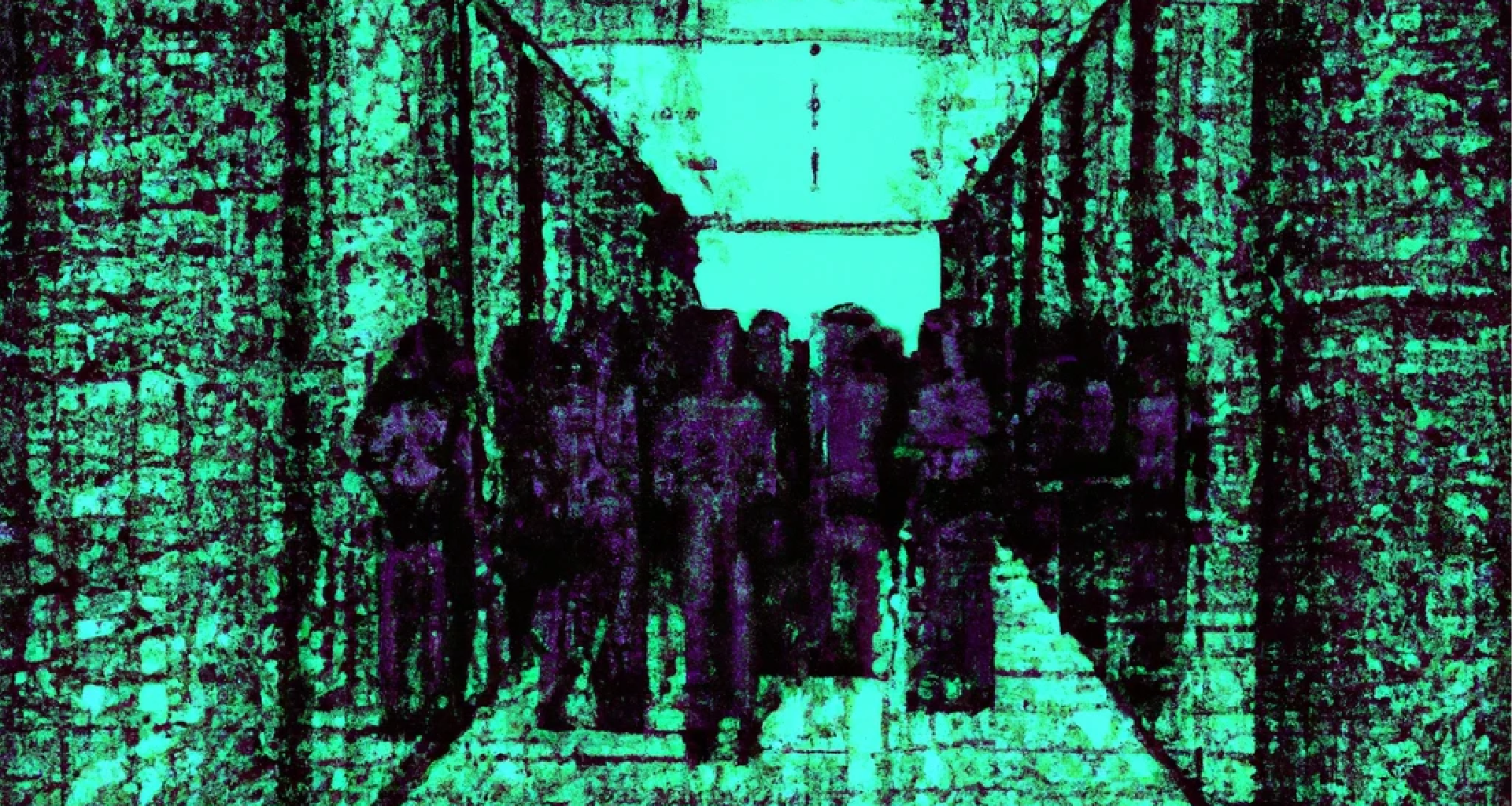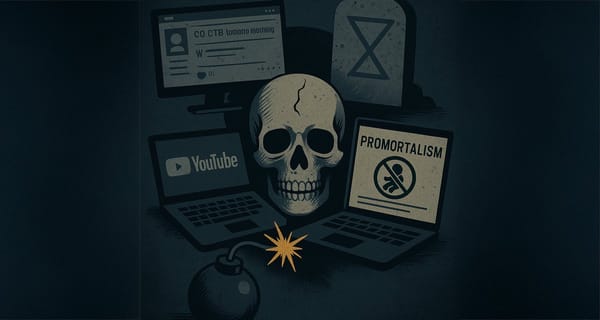A Glimpse Into The World of Pedophilia Support Groups In Cyberspace
The digital world provides a way to cross boundaries. Social forums on websites like Mastodon and Pawoo enable offenders to host and distribute child sexual abuse materials among members.

Summary
The Internet is the ultimate dark alley where pedophiles form supportive online communities with others who display similar deviant and criminal interests (Holt 2007, Holt et al. 2010, Holt & Bossler 2020). Pedophiles in these communities indulge in sexual abuse fantasies and offenders distribute child sexual abuse materials. The normalization of pedophilia gives agency to in-groups that no longer hide within dark web chat rooms.
The digital world provides a way to cross boundaries. Social forums on websites like Mastodon and Pawoo enable offenders to host and distribute child sexual abuse materials among members.
Child sexual abuse materials often depict violent and graphic child sexual abuse, but they also range from the seemingly benign images of children with subtle sexual exposure and innuendo, to the truly profane. Those who try to mimic normal behavior move within these ranges, the most noticeable are those who share publicly in the child sexual abuse they commit and, or fantasize of committing.
Pedophilia Support Communities
The following takes place in Mastodon rooms called NNIA Space (Non Normative Identities Alliance) and Pedo School. Despite the rooms focus on atypical activities and sexual fantasies involving children, they sell themselves as support groups for marginalized and stigmatized demographics, a mischaracterization that enables them to appear less ominous to outsiders.
This is from a conversation taking place between members. When asked what it is like being a MAP (Minor rape attracted person) the response describes sexual feelings for children in the same emphasis you would hear someone describe an intimate partner.
anonymous: What is it like being a map what are the upsides?
@chifutan: The upsides I can see is that maps take significantly better care of children than non-maps. They love children more deeply than the average adult attracted person would ever love another adult, they have a way with children that is unmatched by others.
Pedophiles do not believe they are predators in search of prey. Among their delusions pedophiles desire a love affair. To them, attraction is a courtship where they not only want sex, but seek validation for their compulsions.
The French author Gabriel Matzneff wrote about raping children for decades before it was discovered he was a serial sex offender, and it took a memoir by one of his victims for authorities to finally bring charges against Matzneff (Springora, 2021). Springora's book details how Matzneff manipulated his victims into believing they were a willing party in the sexual abuse, an example of the paradox of abuse as a form of love.
In the Mastodon rooms, NNIA Space users discuss their desire for lenient laws, concluding that if the child is not kidnapped or physically assaulted, the sexual assault should not be prosecutable.
@foobar: I propose that age of consent laws be used only in cases where other crimes have been committed. In other words, AoC violations would only be pressed if the child was kidnapped, drugged, or harmed in some objectively provable way. So we can have legal child love, but with the understanding that if the child is harmed by the adult in any way, he will face punishment.
The absence of escalating criminality, such as kidnapping a child, is used to justify the act of child sexual abuse. The pedophile argues in favor of child sexual abuse as long as the child isn’t kidnapped or drugged. To the pedophile, child rape itself is not objectionable.
On Twitter, a preschool teacher affirms on others that the urge to sexually abuse a child is not the same as having an urge to harm a child.
@miamiautumn8: Minor attraction feels just like attraction to adults except the attraction is to minors. MAPs don’t have “urges” to harm kids; we’re just attracted to them. Most MAPs know sexual activity is harmful to kids, so we never engage in it. We don’t want to harm kids.
Most people consider both physical and sexual abuse harmful, however, the pedophile in question denies these normative standards. The pedophile refuses to admit child sexual abuse is harmful and will resort to deniability.
This conversation continues on Twitter, escalating from denial, to a detached and uncaring self-absorption in rationale.
@miamiautumn7: I’m into toddler con, and it has absolutely nothing to do with power for me. I like content where the characters are respectful of each other and engage in loving activities. It has nothing to do with “innocence” with me. The concept of innocence is a big turnoff for me actually.
The pedophile rejects the harm involved in child sexual abuse and maintains a belief that intimacy is an act of love and kindness. To free themselves of guilt, they leave no room for innocence. The pedophile demonstrates a conceited view of the concept of innocence, they are not only indifferent to innocence, but also see it as a nuisance.
In this example, the fantasy of child sexual abuse is largely detached from reality. They are motivated by desire, and advance their ambitions by laying an intricate groundwork of deception and manipulation directed at others.
The pedophile will do or say whatever enables them to reinforce limitless want, their performance displaying a disregard for the welfare of others, ranging from the hidden to the truly profane.
@folk devil: I haven’t seen it but I think a lot of pro CS do focus on the lovey lovey maps, whereas I just wanna see irreversible damage done to a child and then kill them.
Pedophiles imitate what they think is the behavior of the truly disturbed and modify this behavior into a sex positive fantasy of their own making. Alienated from conventional sexual norms, chat room members mitigate self-worth by building social connections that validate their deviant interests (Durkin 1997; Durkin & Bryant 1999; Jenkins 2001; Quayle & Taylor 2002). Fantasy advances their belief that they have achieved societal approval and moral support, especially when they ambiguously hide their fantasies and misdeeds in anecdotes which are passed off as passive social discourse.
In NNIA Space, members share fantasy as hypotheticals to avoid unwanted attention. The following post is introduced as conjecture, where the member invites others to conceive their own imagined fantasy.
@kayfaraday: Non-offending MAP that wants nothing more than to kidnap, viciously rape, ballgag, choke to death, then behead hot littler girls.
In criminology, the advancement of social learning theory by Akers and colleagues, covers the broader concept of reinforcement and imitation. The nature of having others share in fantasy enactment is coercive, the playfulness of conversation is intended to groom members who are children.
Pedophiles look for victims that fit their particular fantasy type, and possession of any child sexual abuse materials will often reflect this pattern. Child sexual abuse materials give vision to fantasy and fuels the compulsion to act. Criminal behavior is learning, in what Burgess and Akers describe as, a form of operant conditioning (Burgess & Akers 1966).
The fantasy to be desired, loved, cared for, and admired, is perverted in service to the twisted needs of those who abuse, exploit, and murder children. Those who investigate sex crimes and missing persons, know what they are up against.
Learn More: The Palgrave Handbook of International Cybercrime and Cyberdeviance (Holt & Bossier 2020)
Deviant and criminal activity is justified because interaction and communication between minds occurs without the intervention of any known physical agency. The person with pedophilic tendencies attaches themselves to the metaphysical, act of child sexual abuse, putting a precarious distance between themselves and the act itself. There is no policing between the minds of pedophiles, so they are free to impart their fantasies by whatever means available.
These means often include images, videos, stories of graphic and lewd depictions of child sexual abuse. Hundreds of thousands of users share child sexual exploitation materials on social media; it is rampant, readily accessible, and mostly offered for free. The majority of CSAM online is distributed through peer-to-peer networks (Europol European Cybercrime Center 2014).
Predation varies from the subtle, which is easier to hide because it comes off as caring, and extends all the way to the more sadistic child sex offenders who engage in the kidnapping, rape, and murder of children. Most are the former, and are often someone the child knows, such as, a trusted friend, family member, or mentor. Pedophiles who groom admonish attention to form relationships, build repertoire and public trust. In the public trust lure, the pedophile appeals to public empathy in an effort to build societal consent.
With Internet access pedophiles make the choice to live their lives in public, making them easier to spot. Deception to a pedophile is a cooperative act which needs and seeks public consent. Deception experts suggest that society can exempt themselves from predation by being explicit about their moral code (Meyer, 2012).
Pedophiles appeal to their victims good nature, and they are effective at persuasion because they manipulate others capacity for good. “Pedophiles are good at hiding, good at hunting, and good at convincing others they are good people, however, place pedophiles somewhere they can be bad and their cunning nature comes out” (Peterson, 2017).
Pedophiles want us to believe that contact with a child seems beyond reason even to them, and that in turn, they possess a moral compass, understand their attraction is a predation and work hard against it. The belief that pedophiles understand boundaries and will adhere to them is part of the manipulation. This becomes a key component in their activism and advocacy to convince others they are harmless and not worth the scrutiny society levies on them. Pedophiles often describe themselves as harmless, but their acts pledge a voluntary and very destructive form of malevolence.
Acknowledgements
I would like to express my gratitude to Crete Greece, Kearee, and GPS. My research relies on volunteers who are willing to respond to questions and inquires, many of them with the critical knowledge needed for deeper understanding. The information they uncover and the resistance they maintain against pedophilia and child sexual abuse often comes at a great personal risk to them. They are a crucial and unsung part of the research effort.
References
Braithwaite, J. (2000). Shame and criminal justice. Canadian Journal of Criminology, 42(3), 281–298. https://doi.org/10.3138/cjcrim.42.3.281
Burgess, R., & Akers, R. (1966). A differential association-reinforcement theory of criminal behavior. Social Problems, 14(2), 128–147. https://doi.org/10.2307/798612
Durkin, K. F. (1997). Misuse of the Internet by pedophiles: Implications for law enforcement and probation practice. Federal Probation, 14, 14–18. U.S. Department of Justice
Durkin, K. F., & Bryant, C. D. (1999). Propagandizing pederasty: A thematic analysis of the on-line exculpatory accounts of unrepentant pedophiles. Deviant Behavior, 20(2), 103–127. https://doi.org/10.1080/016396299266524
Europol European Cybercrime Center. (2014). Commercial sexual exploitation of children online a strategic assessment. https://www.europol.europa.eu/cms/sites/default/files/documents/efc_strategic_assessment_2014.pdf
Holt, T.J., & Bossler, Adam (2020). The Palgrave Handbook of International Cybercrime and Cyberdeviance. Palgrave Macmillan Cham. https://doi.org/10.1007/978-3-319-90307-1
Holt, T. J. (2007). Deviant Behavior subcultural evolution? examining the influence of on-and offline experiences on deviant subcultures. Deviant Behavior, 28, 171–198. https://doi.org/10.1080/01639620601131065
Holt, T. J., Blevins, K. R., & Burkert, N. (2010). Considering the pedophile subculture online. Sexual Abuse: A Journal of Research and Treatment, 22(1), 3–24. https://doi.org/10.1177/1079063209344979
Jenkins, P. (2001). Beyond tolerance: Child pornography on the Internet. New York: New York University Press. U.S. Department of Justice
Meyer, P. M. (2010). Liespotting: Proven techniques to detect deception. New York: St. Martin’s Press.
Peterson, Jordan (2017). Maps of Meaning 03: Marionettes and Individuals. Lecture.
Springora, Vanessa (2021). Consent. Grasset & Fasquelle.
Quayle, E., & Taylor, M. (2002). Child pornography and the Internet: Perpetuating a cycle of abuse. Deviant Behavior, 23, 331–361. https://doi.org/10.1080/01639620290086413




